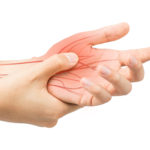 One of the more interesting trends of recent years has been the number of new technologies emerging to help wound care. The latest of these emerged in a recently published paper from Imperial College London, where researchers describe their biomaterial-based technology that can help to heal tissue.
One of the more interesting trends of recent years has been the number of new technologies emerging to help wound care. The latest of these emerged in a recently published paper from Imperial College London, where researchers describe their biomaterial-based technology that can help to heal tissue.
The team have developed a new molecule that they believe can fundamentally change the way materials work with the body. The technology is known as traction force-activated payloads (TrAPs), and it allows materials to interact directly with the natural repair systems in the body to support healing.
The healing process is one where cells travel through collagen found in the wound, and as they move they pull on the collagen to activate healing proteins in the injured tissue. The TrAPs were designed to try and replicate this natural process artificially.
The TrAPs were tested in the laboratory and were found to interact successfully with the cells as they crawled through the collagen, thus activating the protein to heal the wound. The team believe this is the first time that scientists have been able to activate healing proteins using man-made materials.
“Using cell movement to activate healing is found in creatures ranging from sea sponges to humans. Our approach mimics them and actively works with the different varieties of cells that arrive in our damaged tissue over time to promote healing,” they explain.
Taking to market
They believe that their approach could prove useful in a wide variety of injuries, including even bone fractures and the scar tissue that results from heart attacks. It’s also likely to be a vital technology for healing wounds that struggle with current interventions, such as diabetic foot ulcers.
TrAPs are believed to be relatively straightforward to make, and their man-made status makes them fairly easy to recreate in a standard lab, or indeed in industrial facilities.
“The TrAP technology provides a flexible method to create materials that actively communicate with the wound and provide key instructions when and where they are needed. This sort of intelligent, dynamic healing is useful during every phase of the healing process, has the potential to increase the body’s chance to recover, and has far-reaching uses on many different types of wounds. This technology has the potential to serve as a conductor of wound repair, orchestrating different cells over time to work together to heal damaged tissues,” the team conclude.